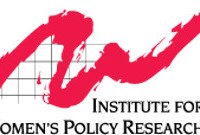Study shows women are no closer to equal pay
Women will not achieve equal pay until the year 2059 if current trends are projected forward, according to a study from the Institute for Women’s Policy Research. That would one year further out than what was projected last year.
Afact sheetby theIWPR uses updated data released by the U.S. Census Bureau to chart the gender earnings ratio since 1960 and analyzes changes in earnings during the last year by gender, race, and ethnicity. The gender wage ratio improved slightly from 77.6 percent in 2013 to 78.6 percent in 2014, which the Census Bureau reported was not statistically significant.
“With this insignificant improvement in the gender wage ratio, an IWPR analysis finds that, if current trends are projected forward, women will not receive equal payuntil 2059. This date is one year further out from last year, indicating that the slow progress in closing the gender wage gap over the last decade may have long-term effects on women's economic gains,” the institute said in a news release.
In 2014, median annual earnings for women working full-time, year-round were$39,621, compared with $50,383for men; neither women nor men saw a significant increase in inflation-adjusted earnings compared with 2013. Hispanic women's inflation-adjusted earnings declined by 2.8 percent in 2014, compared with 2013, Asian women's earnings increased by 2.2 percent, and the earnings of white and black women changed by less than 1 percent.
"For decades, women have been increasing their level of educational attainment and gaining job experience, which economists would call increasing their human capital," saidIWPR President and economistHeidi Hartmann, Ph.D."Yet, their earnings have not kept pace with these increases. Although the labor market has steadily improved since the Great Recession, and both men and women are gaining jobs, a lack of progress in earnings reflects remaining weakness in the labor market."
Persistent earnings inequality for working women translates into lower lifetime earnings, less family income, and more poverty in families with a working woman. According to a recent IWPR estimate, thetypical working woman loses $530,000over the course of her working life due to the gender wage gap; for women with a college education, the losses amount to$800,000. IWPR has also found that the poverty rate for working women would becut in halfif women were paid the same as comparable men.
"It's obvious that more needs to be done to speed up progress on closing the gender wage gap—not just because women deserve to be paid equally for their work, but because it is hurting families and the economy overall," Dr. Hartmann, a MacArthur Fellow, said. "Strengthening current policies, such as modernizing the regulations for overtime pay and ending retaliation against workers for sharing pay information, and enacting new policies that ensure greater access to affordable child care, paid family leave, and paid sick days will go a long way to shortening the amount of time women—and all of us—must wait to see equal pay."
The Institute for Women's Policy Research (IWPR) is a 501(c)(3) tax-exempt organization that conducts rigorous research and disseminates its findings to address the needs of women and their families, promote public dialogue, and strengthen communities and societies.

